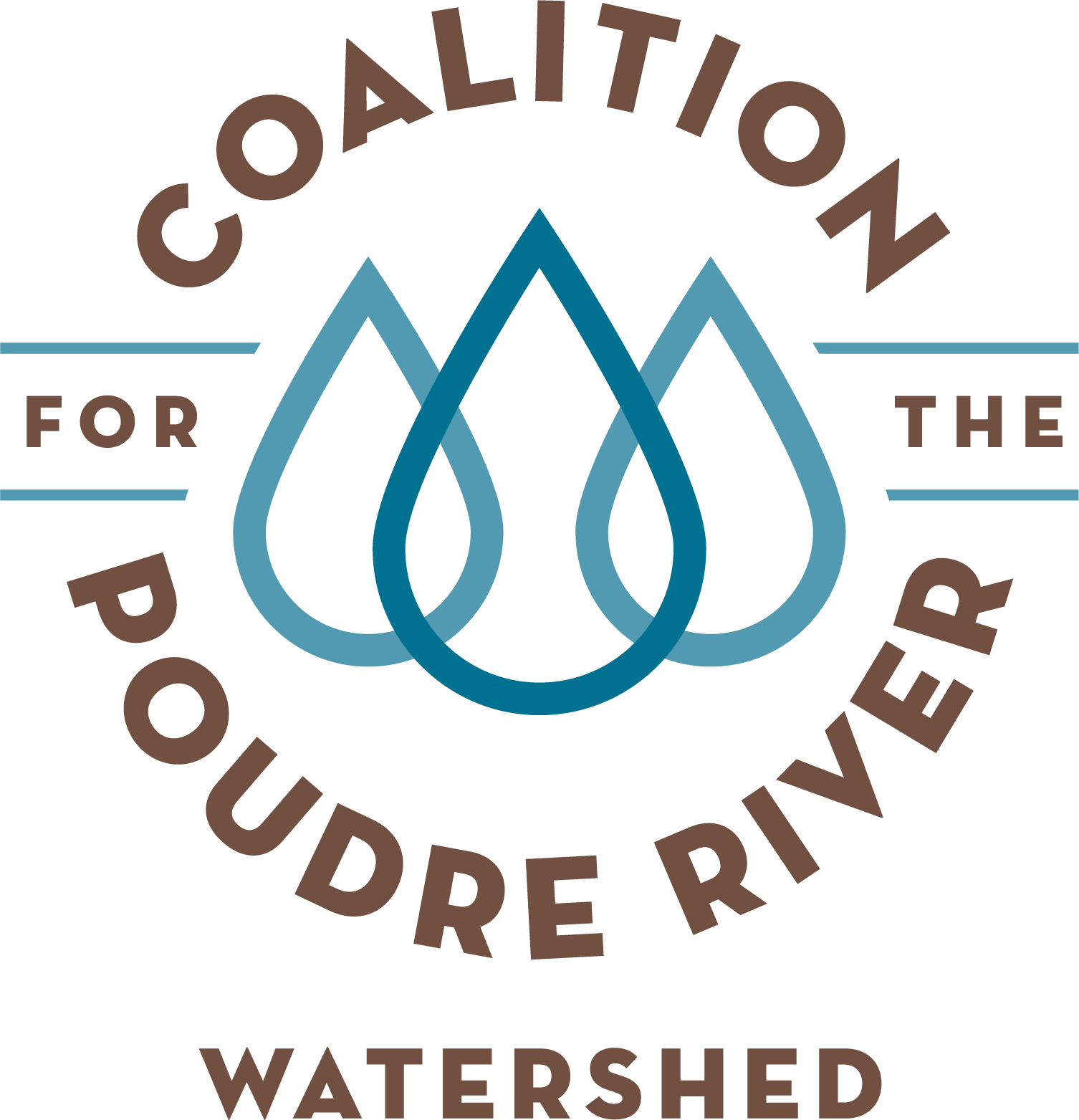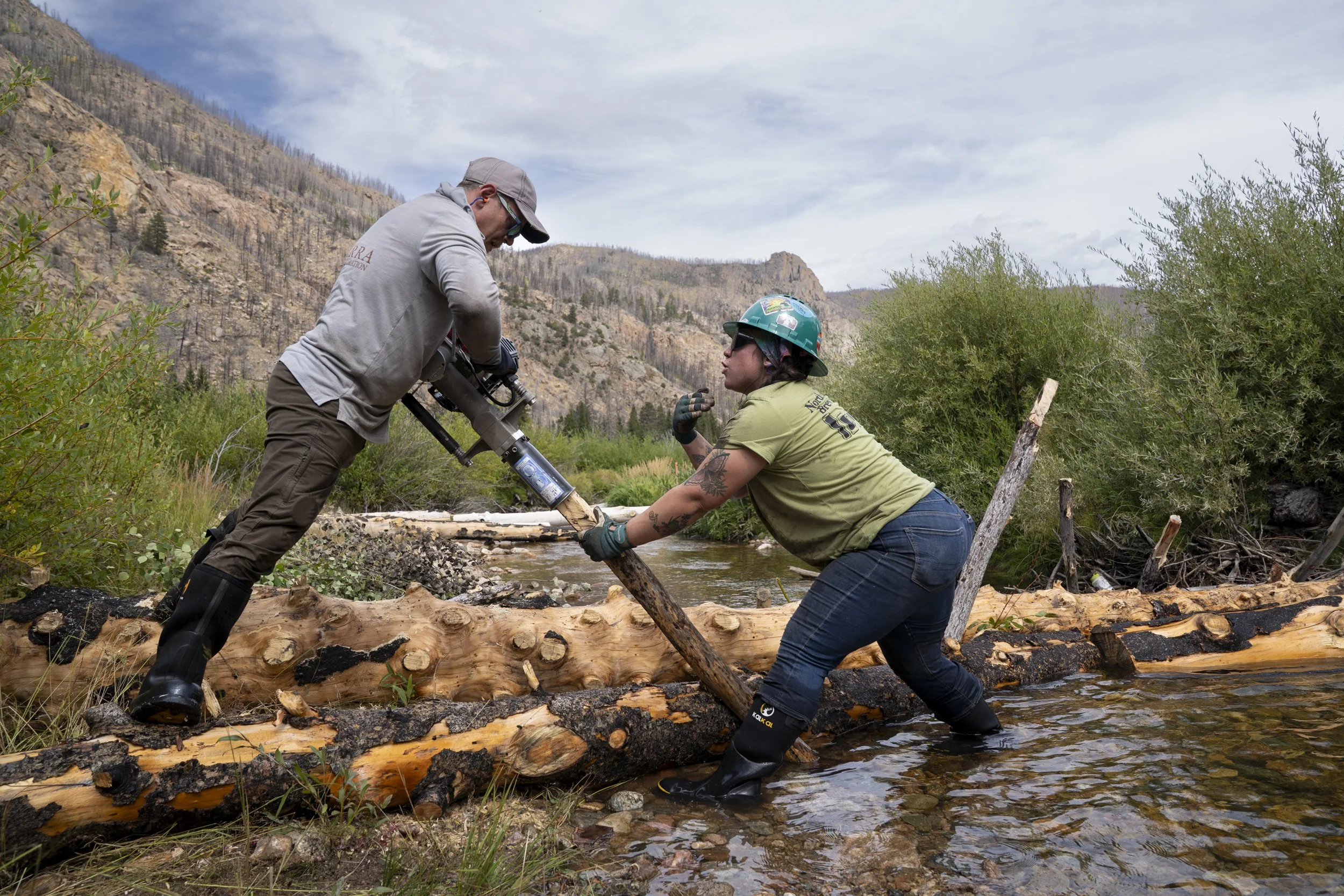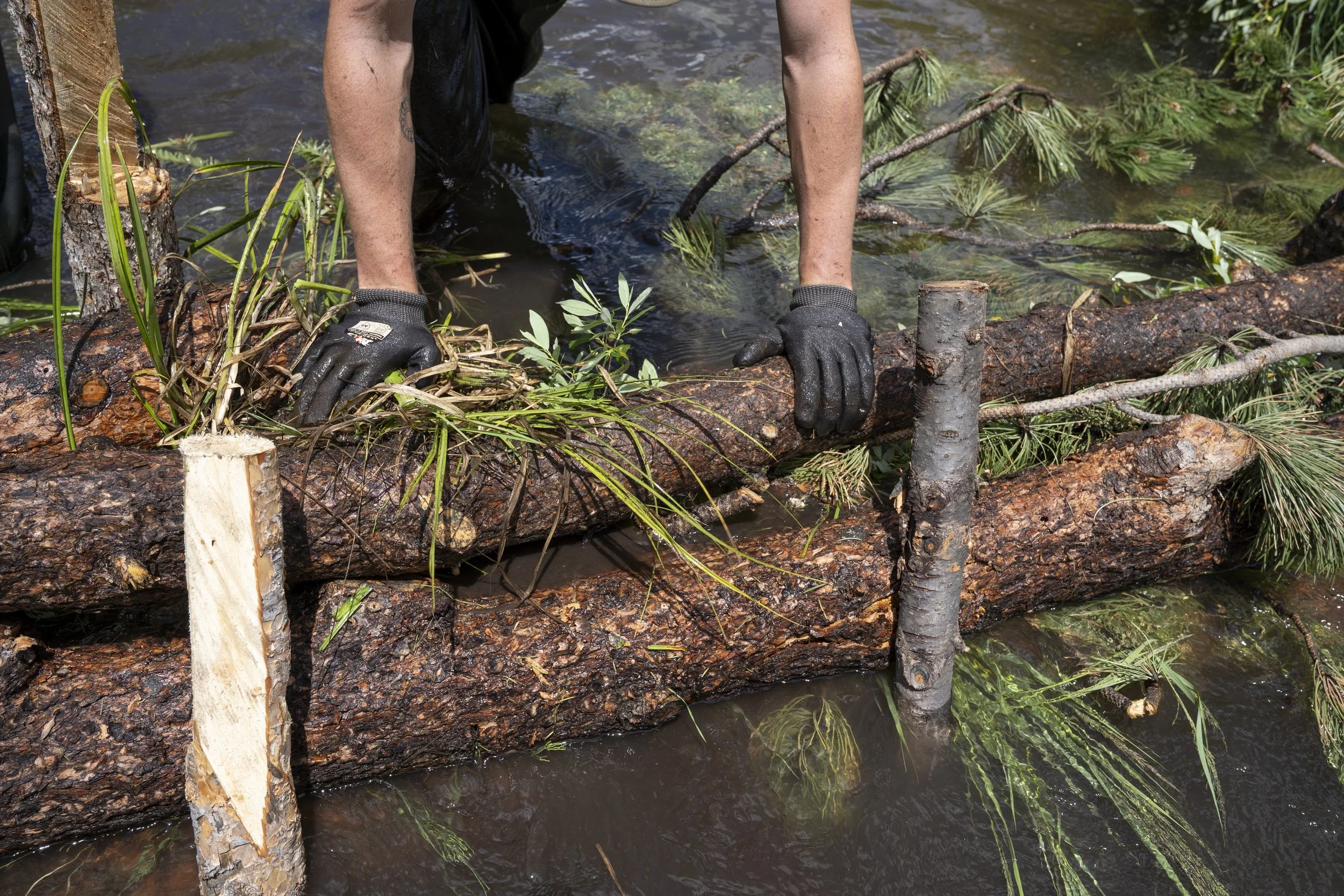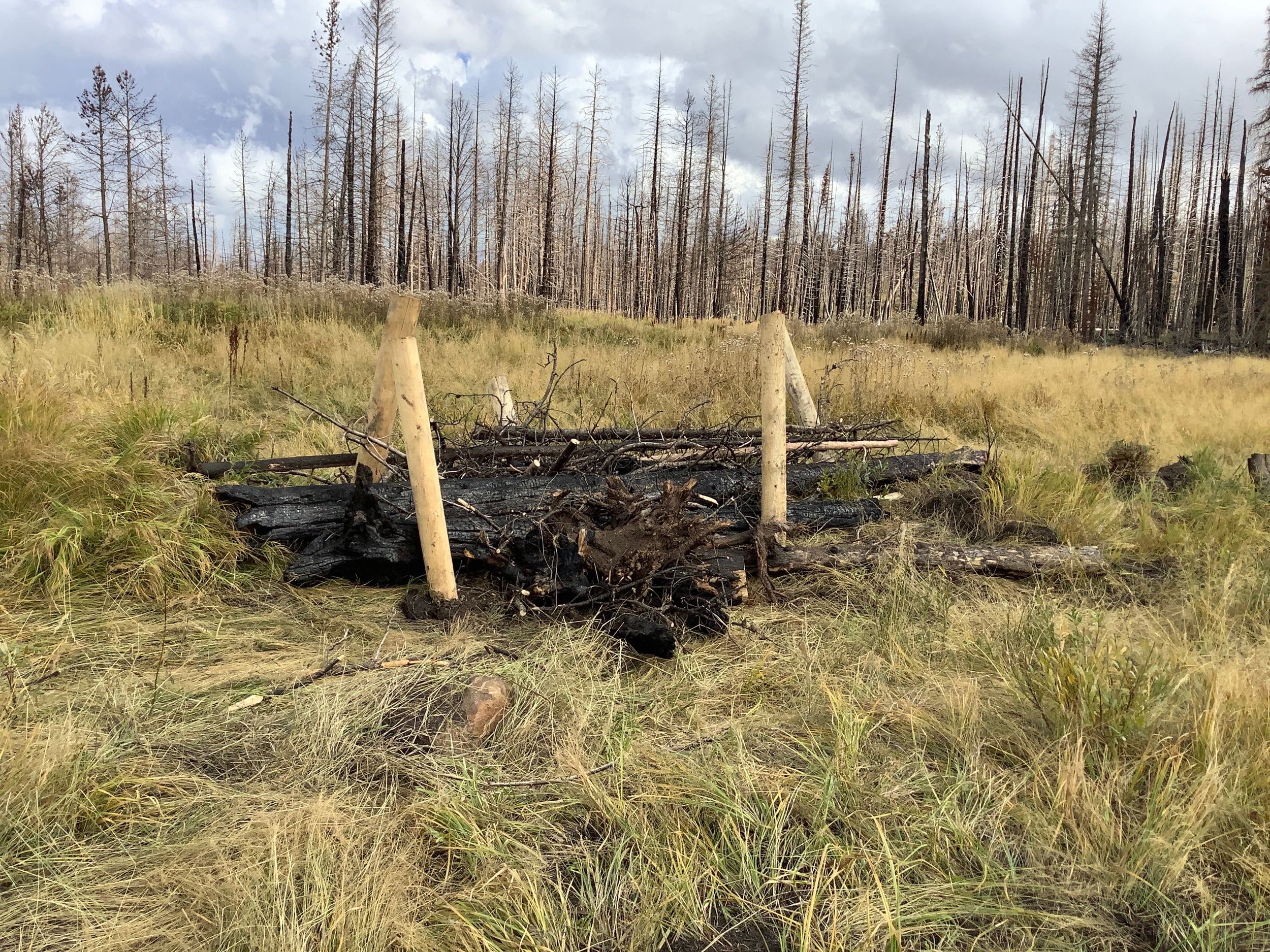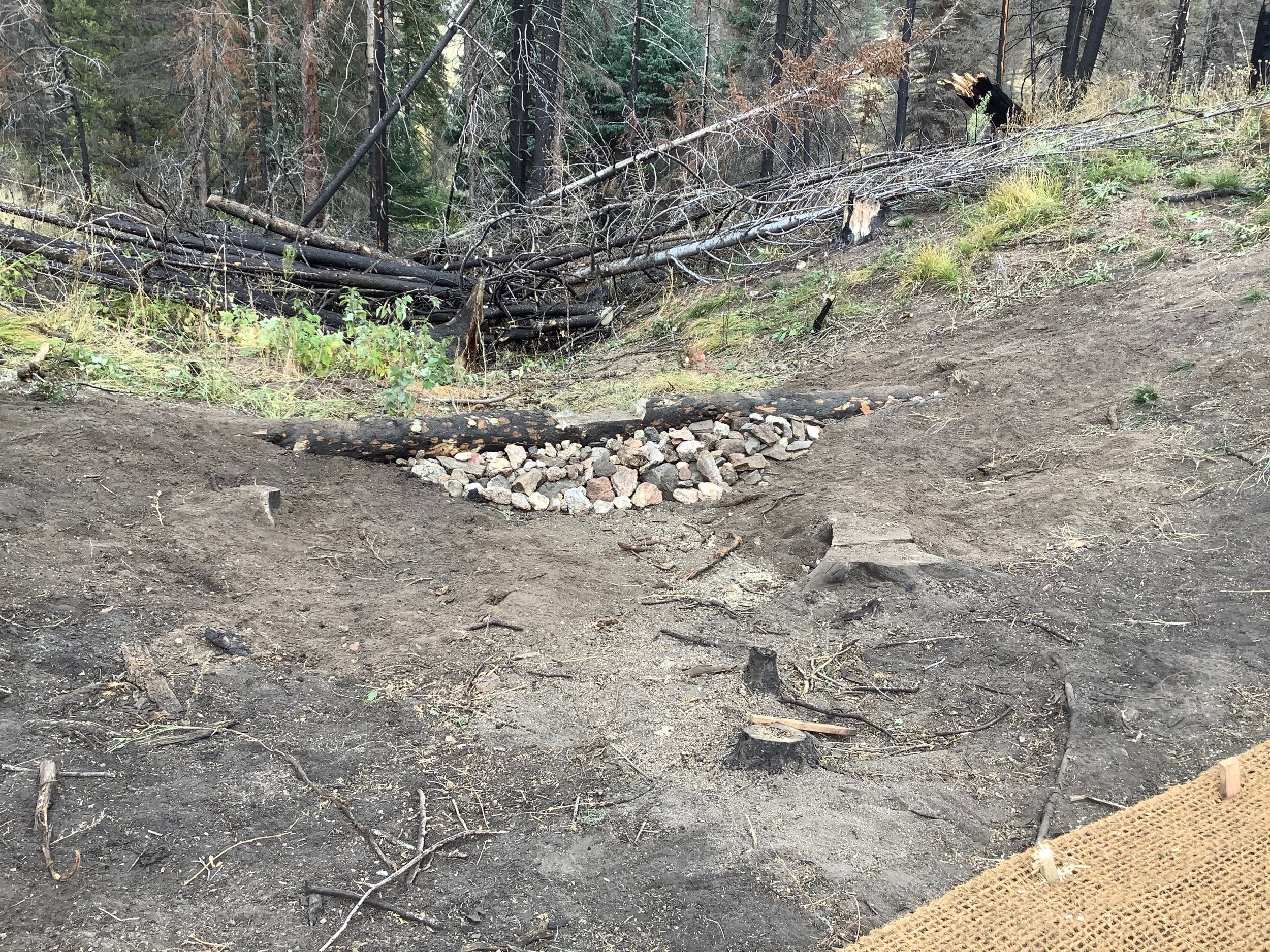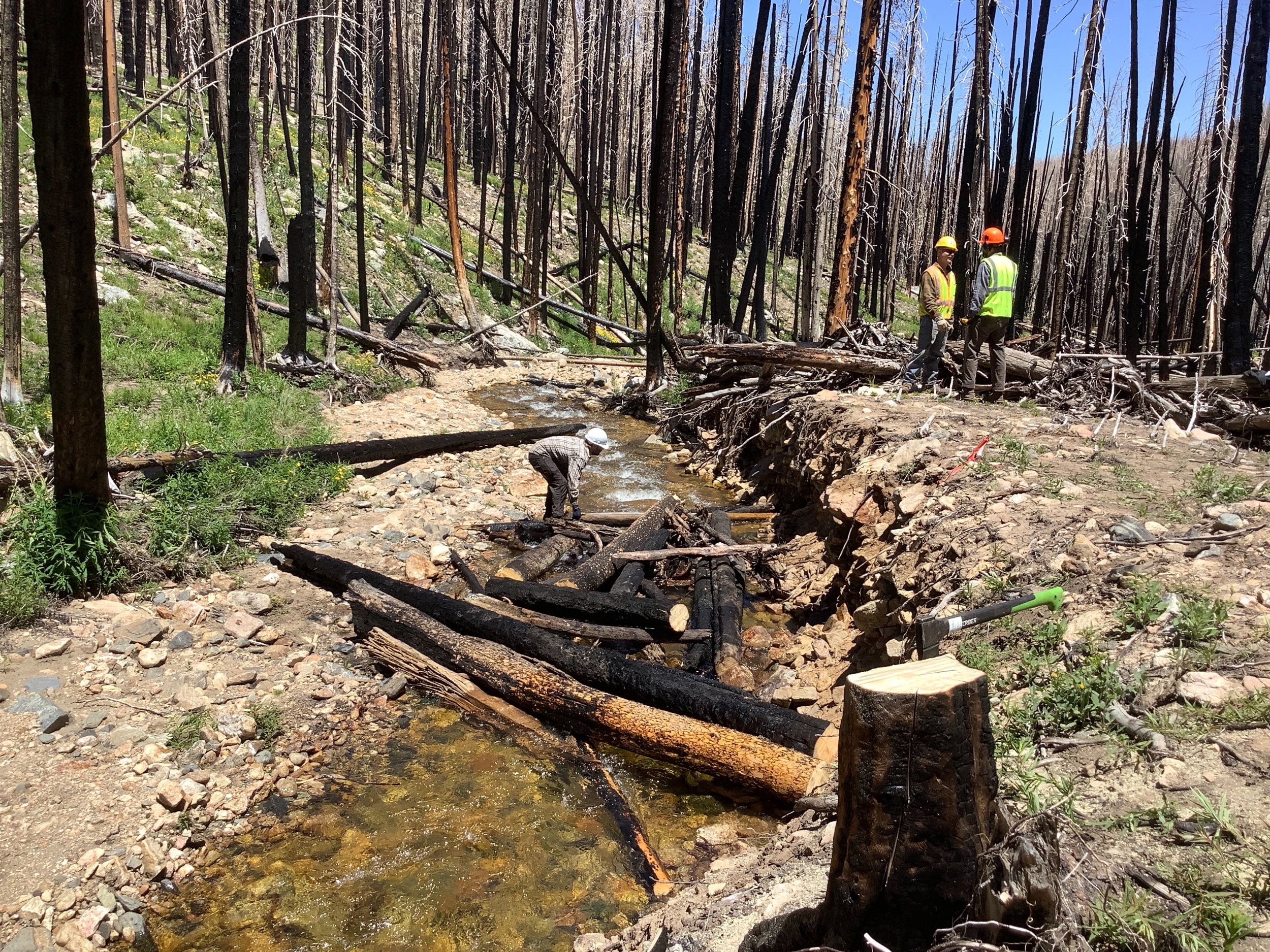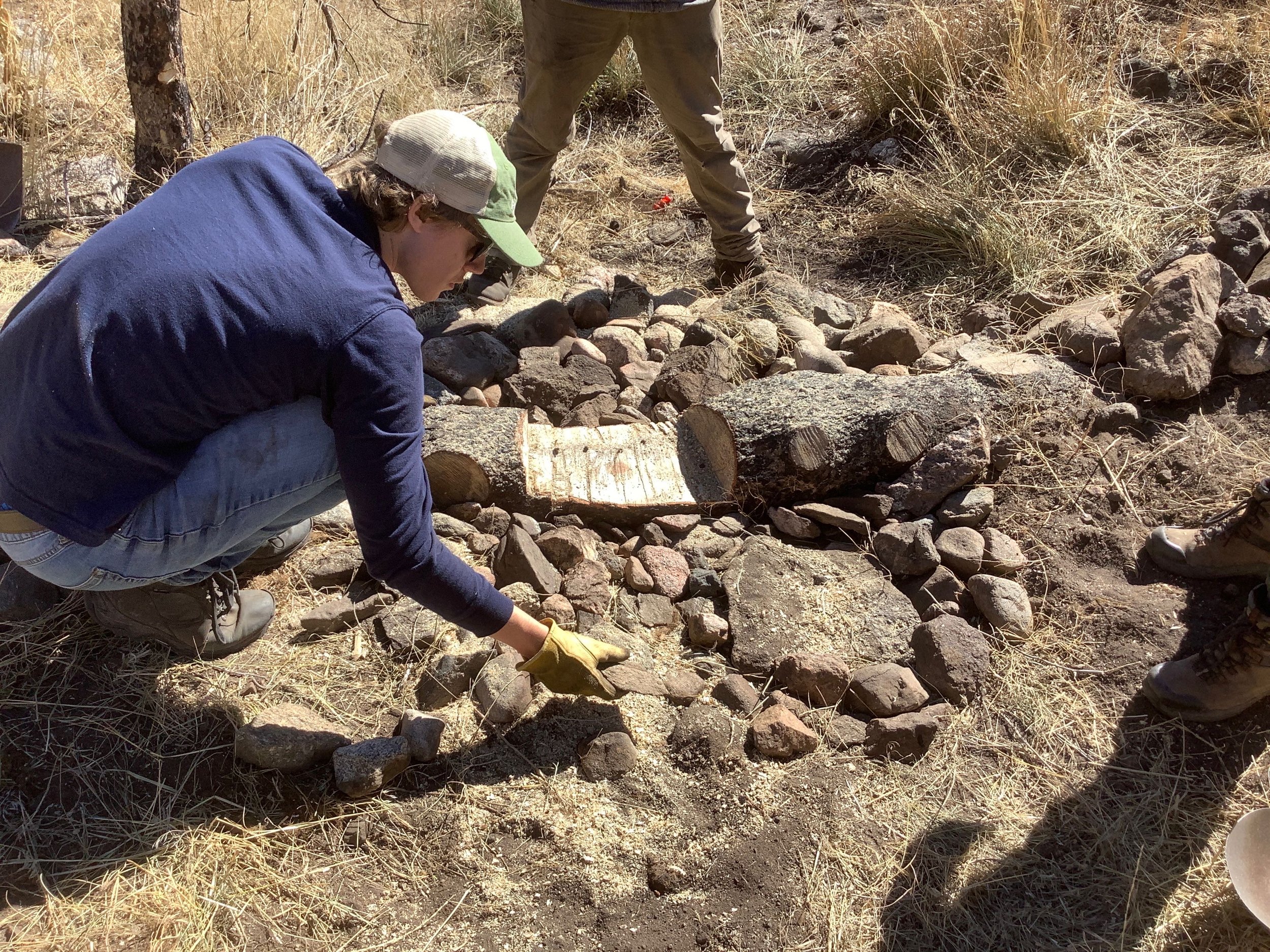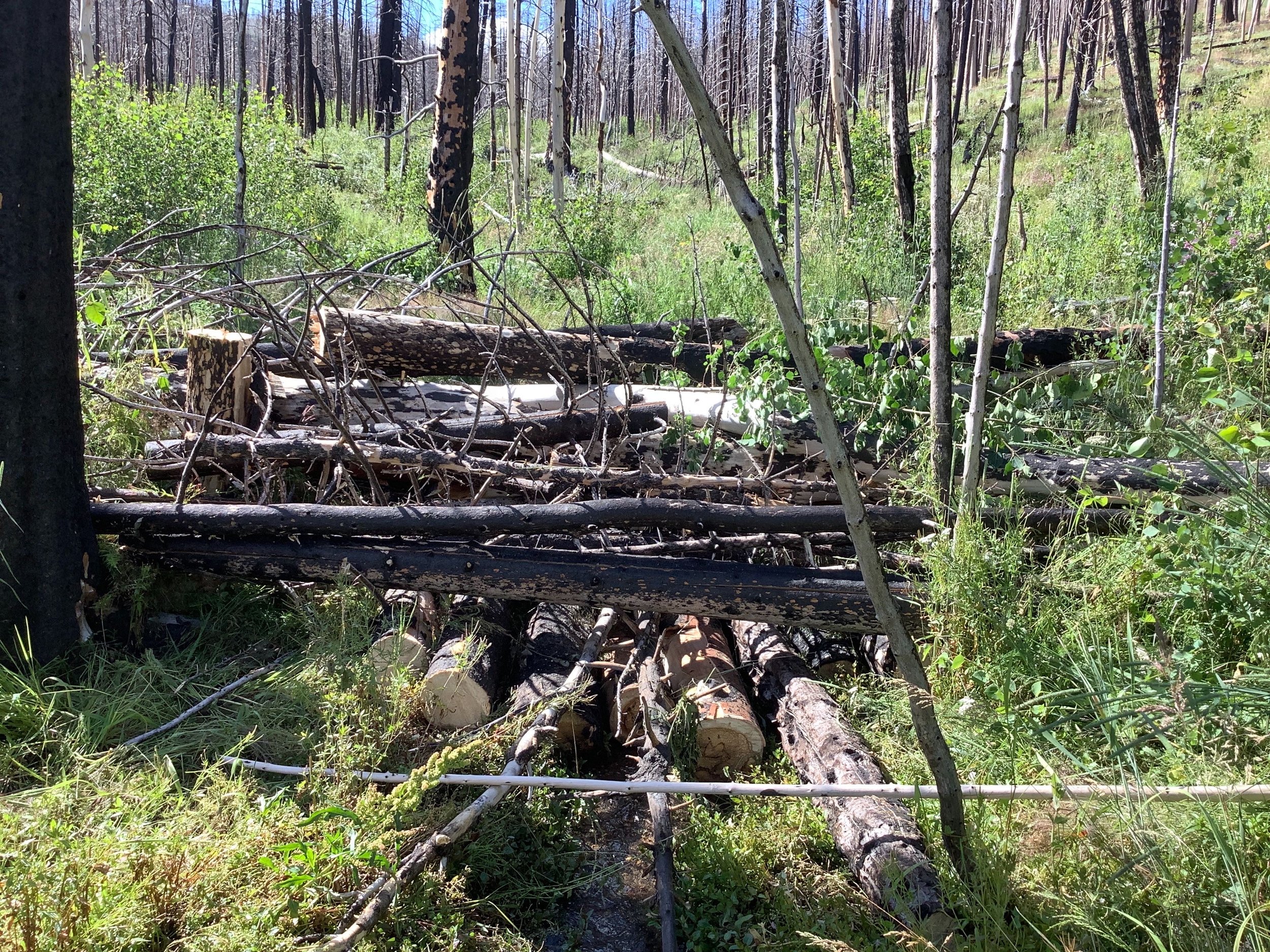At the Coalition for the Poudre River Watershed (CPRW), we work closely with partners, using a science-based approach, to analyze the needs of each stretch of river or tributary to determine what kind of restoration should be applied, ensuring we use the right restoration techniques for the right situations.
Some of our river restoration projects, such as ditch improvements and fish passage, are large-scale initiatives that require heavy machinery and expert contractors. And some of our projects, especially within smaller tributaries in the upper watershed, utilize “low-tech process-based” techniques that mimic and encourage natural processes.
Low-tech process-based restoration (LTPBR) refers to a method of restoring degraded or damaged riverscape ecosystems that relies on natural processes and minimizes the use of technology or external inputs. LTPBR is a subset of process-based restoration (PBR), which seeks to re-establish natural stream processes by reconnecting streams with their floodplains and adjacent wetlands (Restoring Western Headwater Streams with Low-Tech Process-Based Methods: A Review of the Science and Case Study Results, Challenges, and Opportunities, American Rivers, 2022)
LTPBR is a holistic approach to restoring ecosystems that emphasizes the importance of the ecological processes that sustain the environment. This method often involves the introduction of native species and the removal of invasive species, the re-establishment of hydrological cycles, and the promotion of natural disturbance regimes.
The goal of low-tech process-based restoration is to create self-sustaining ecosystems that can persist over time with limited human intervention. LTBR projects are cost-effective, scalable, and built to adapt and evolve over time.
What is a Riverscape?
A riverscape refers to the overall visual and physical characteristics of a river and its immediate surroundings. It encompasses the river channel, banks, floodplain, and adjacent landscape elements. A riverscape is a dynamic and interconnected system that includes the water, vegetation, landforms, and human-made features within the river corridor.
Volunteers help install post-assisted log structures (PALS) at Elkhorn Creek, a post-fire restoration site in the Cameron Peak burn area.
Crews build PALS using material harvested on-site, such as burned trees as well as live material.
Benefits of Low-Tech Process-Based Restoration (LTPBR)
Sustainability: Relies on natural processes and does not require ongoing inputs of energy, money, or resources.
Cost-effectiveness: Often less expensive than high-tech methods and can be done using locally available resources.
Improved ecosystem function: Can improve ecosystem functions, such as water retention, soil formation, and carbon sequestration.
Increased biodiversity: LTPBR can increase the diversity of plants, animals, and other species in the area.
Long-term success: Natural processes are self-sustaining and do not require ongoing intervention - more sustainable solution in the long term.
“We hear a lot about the benefits of beavers in stream restoration, but Colorado’s riparian systems are complex and there are many different tools in the restoration toolbox.
During this webinar, you’ll hear about Process-Based Restoration (PBR) and explore on-the-ground projects that represent opposite ends of the PBR spectrum, from “low tech” to “high tech,” and why these different approaches are appropriate in different scenarios.”
Types of Low-Tech Process-Based Restoration Techniques
Beaver dam analogues (BDAs) - BDAs are man-made structures that mimic the form and function of natural beaver dams. They are a permeable, channel-spanning structure with a constant crest elevation, constructed with a mixture of woody debris and fill material to form a pond and mimic a natural beaver dam. They can be built with or without posts to secure them in place.
Post-assisted Log Structures (PALS) - PALS are constructed using woody material of various sizes pinned together with untreated wooden posts driven into the substrate to mimic natural wood accumulations. PALS are designed to influence hydraulic, hydrologic and geomorphic processes.
Log Structures/Tree Felling – Using large material found onsite, crews place and interlock large logs in the channel to increase roughness, reduce flow velocities, and enhance sediment deposition. These features reduce flow velocities by acting as speed bumps for downstream areas. Log structures return flow to the overbank and floodplain areas, reducing stream incision and rehabilitating the floodplain.
Willow Wattles - Willow stakes can be harvested on-site and bundled using biodegradable twine. These bundles are then partially buried and staked into channels with regular baseflow where willows would naturally grow. Willow wattles provide water quality improvements through rapidly establishing woody riparian vegetation to increase sediment storage and nutrient uptake.
Riparian Revegetation and Stabilization - Recovery of riparian areas is critical to improving water quality. Establishing woody riparian vegetation such as cottonwoods, willows, and other native plants increases the capacity for sediment storage and nutrient uptake, provides additional stability, and enhances habitat in riparian and aquatic ecosystems. Native willow and cottonwood stakes are harvested from nearby areas and installed in sites (either staked or bundled as wattles) with shallow water tables that would support successful establishment.
PALS installed in the Cameron Peak Burn area in the Elkhorn Creek watershed. (Photo credit: Ayers Associates)
Log structures increase roughness, reduce flow velocities, and enhance sediment deposition. (Photo credit: Ayers Associates)
Willow wattles help to establish woody riparian vegetation. (Photo credit: Ayers Associates)
Featured Low-Tech Process-Based Restoration Projects
Upper Elkhorn Creek
Cameron Peak Post-Fire Restoration
Lazy D Ranch
Cameron Peak Post-Fire Restoration
Upper Black Hollow
Cameron Peak Post-Fire Restoration
Unnamed Tributary 2
Cameron Peak Post-Fire Restoration
Ratville
Cameron Peak Post-Fire Restoration
Lower Elkhorn Creek
Cameron Peak Post-Fire Restoration
Sheep Creek at Norman Fry
Cameron Peak Post-Fire
Sheep Creek at Sleeping Elephant
Cameron Peak Post-Fire Restoration
Illustration of the process of encouraging beaver dam activity with beaver dam analogs (BDAs) and how this can lead to (on right) self-sustaining Stage Zero conditions (anastomosing or multi-threaded channels around island complexes). Source: Goldfarb, 2018b.
